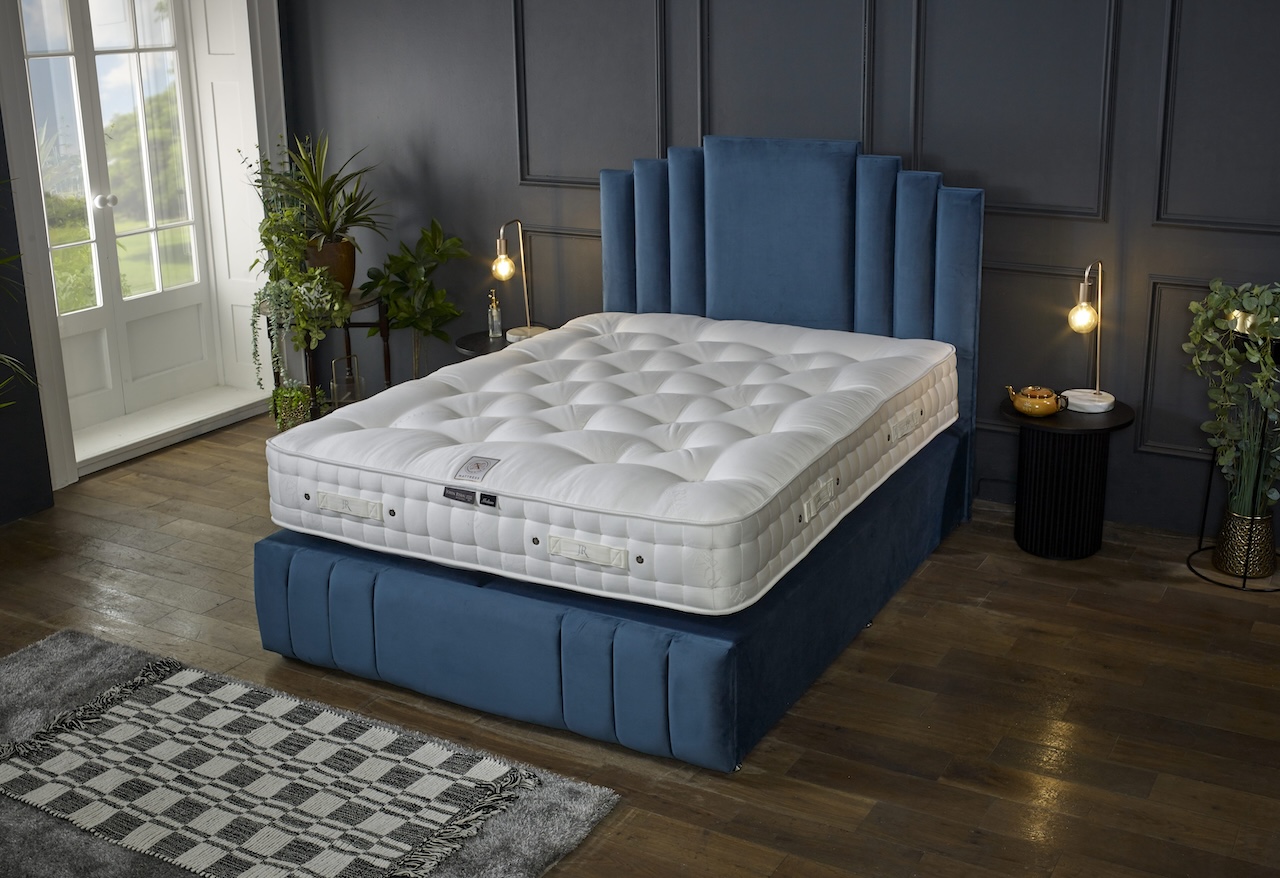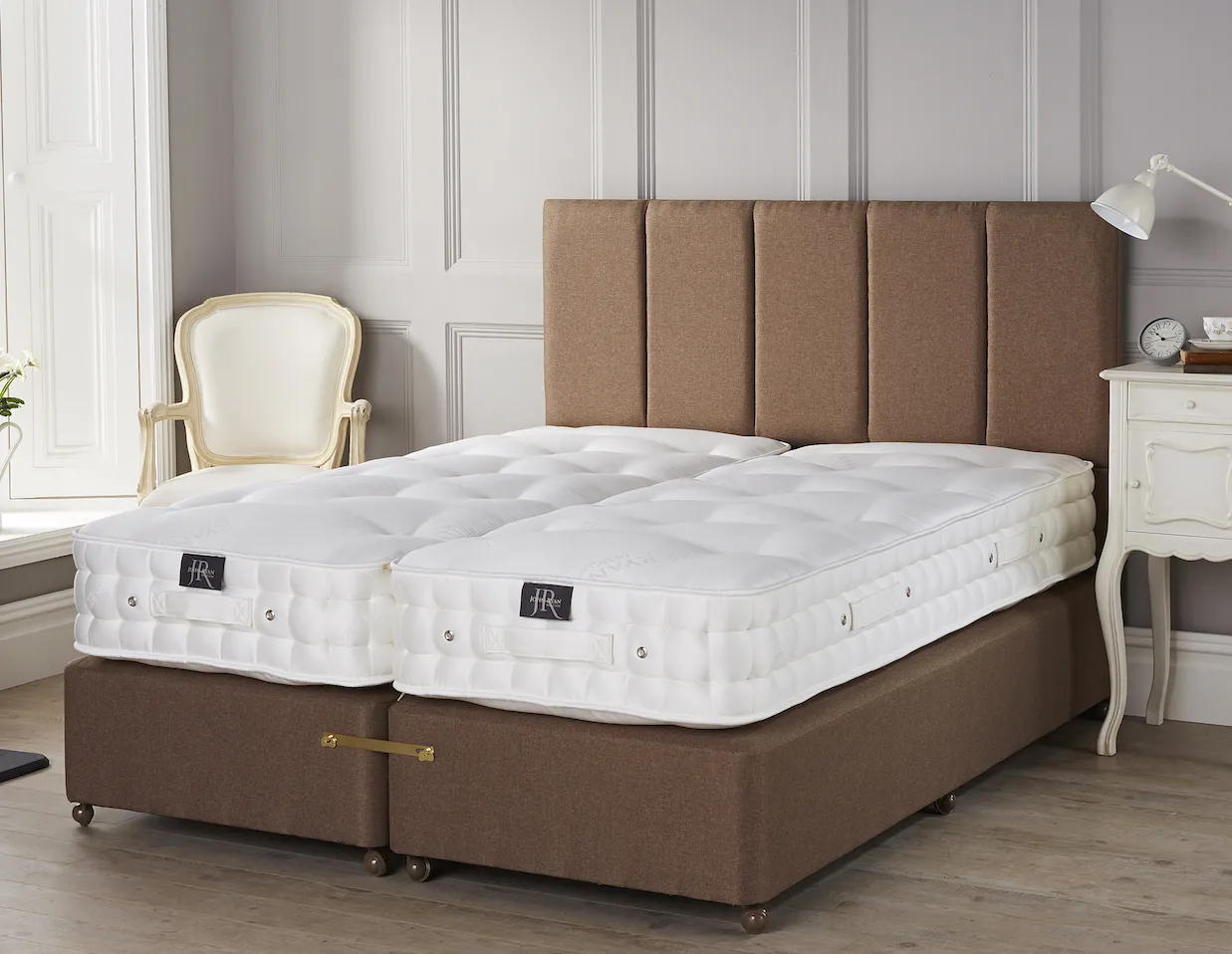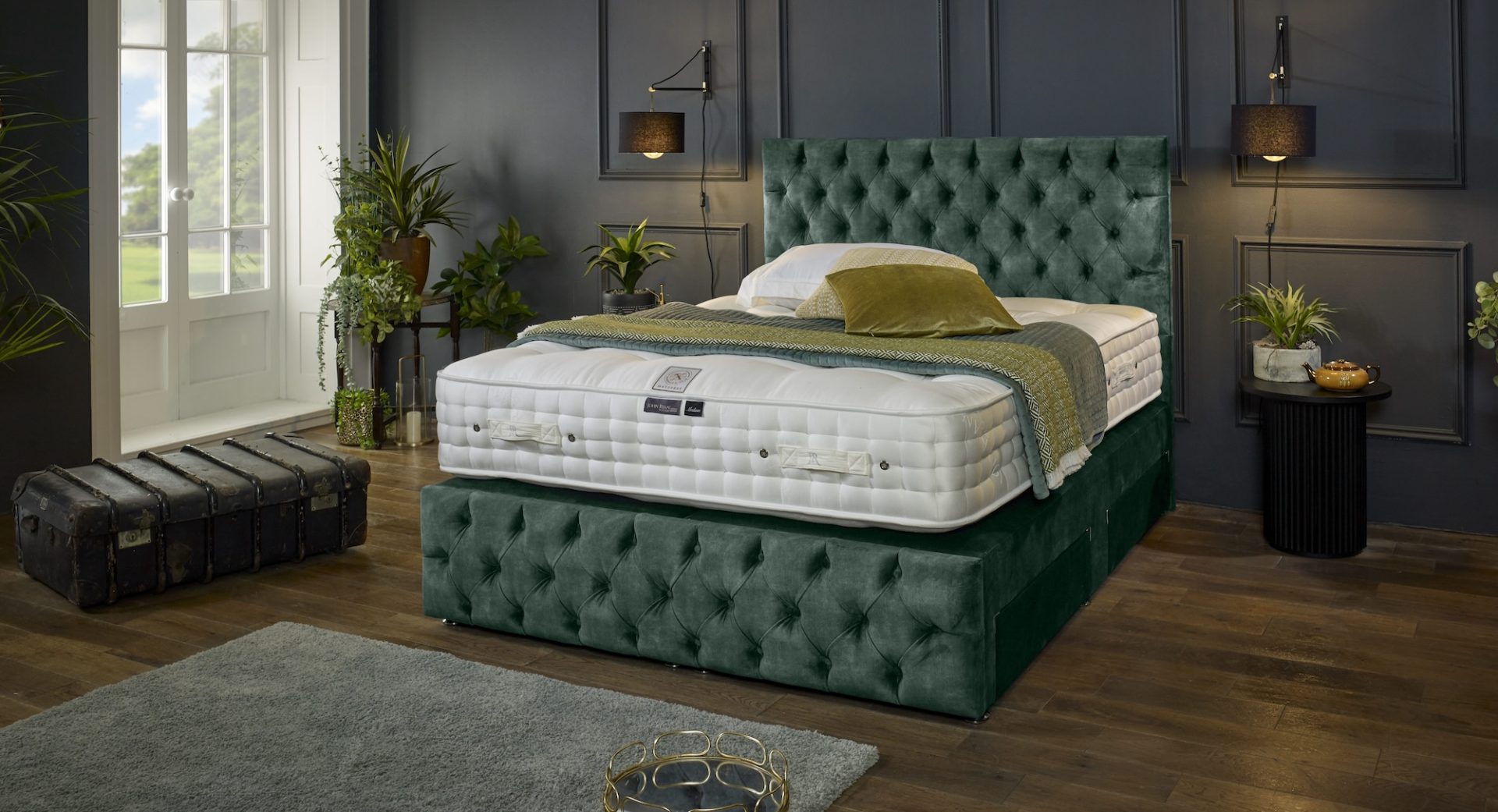Sleep & Well Being, Mattress Science
February 2025How to stop my partner waking me up & disturbing my sleep
There’s nothing more frustrating than lying in bed, desperate for sleep, while your partner’s tossing, turning, snoring, or restless movements keep you awake. We hear sleepers struggle every week in asking us ‘how to stop my partner waking me up’ here at John Ryan By Design. So you’re not alone!
Sleep deprivation can lead to exhaustion, irritability, and even strain on your relationship. Whether it’s constant fidgeting, stolen covers, or mismatched sleep schedules, disrupted sleep can feel like an ongoing battle.
But don’t worry—there are practical solutions to help both of you rest peacefully without sacrificing comfort or connection. We’ve got over 25 years experience in mattresses and sleep so here are our top tips to stop your partner from waking you up in the night so you can sleep better and remove that nighttime strain from your relationship!
1. Assess Your Mattress for Motion Transfer
One of the biggest culprits of sleep disturbance is movement transfer. If your partner tosses and turns, a mattress with poor motion isolation will amplify every movement. We’ve all been there where we are about to fall asleep, and suddenly, you are awoken by the person next to you rolling around. In fact, with open cage or cage-sprung mattresses, this is the biggest drawback as every movement ripples through the bed, and it can feel like trying to surf a wave each night!
Here are the mattress solutions for fidgety sleepers or partners that keep waking you in the night:
A) Opt for a Pocket Sprung Mattress
Unlike open coil mattresses, pocket springs move independently, reducing motion transfer. As they are separate houses, usually in calico encasing, they can react independently of the other mattress springs. This is the single most important change you can make, especially if you are on an open coil mattress, to minimise motion transference at night and hence provide a better night’s sleep!

B) Consider a Latex Comfort Layer
Natural latex is a natural foam which can absorb movement, preventing it from disturbing the other sleeper. Like memory foam, natural latex is far more durable and doesn’t have the heat buildup that critics complain about. As natural latex is breathable adding a latex mattress topper can be a great way to deaden the movement and transference in your mattress at night without the synthetic issues associated with memory foam (chemical nasties, heat and degradation).
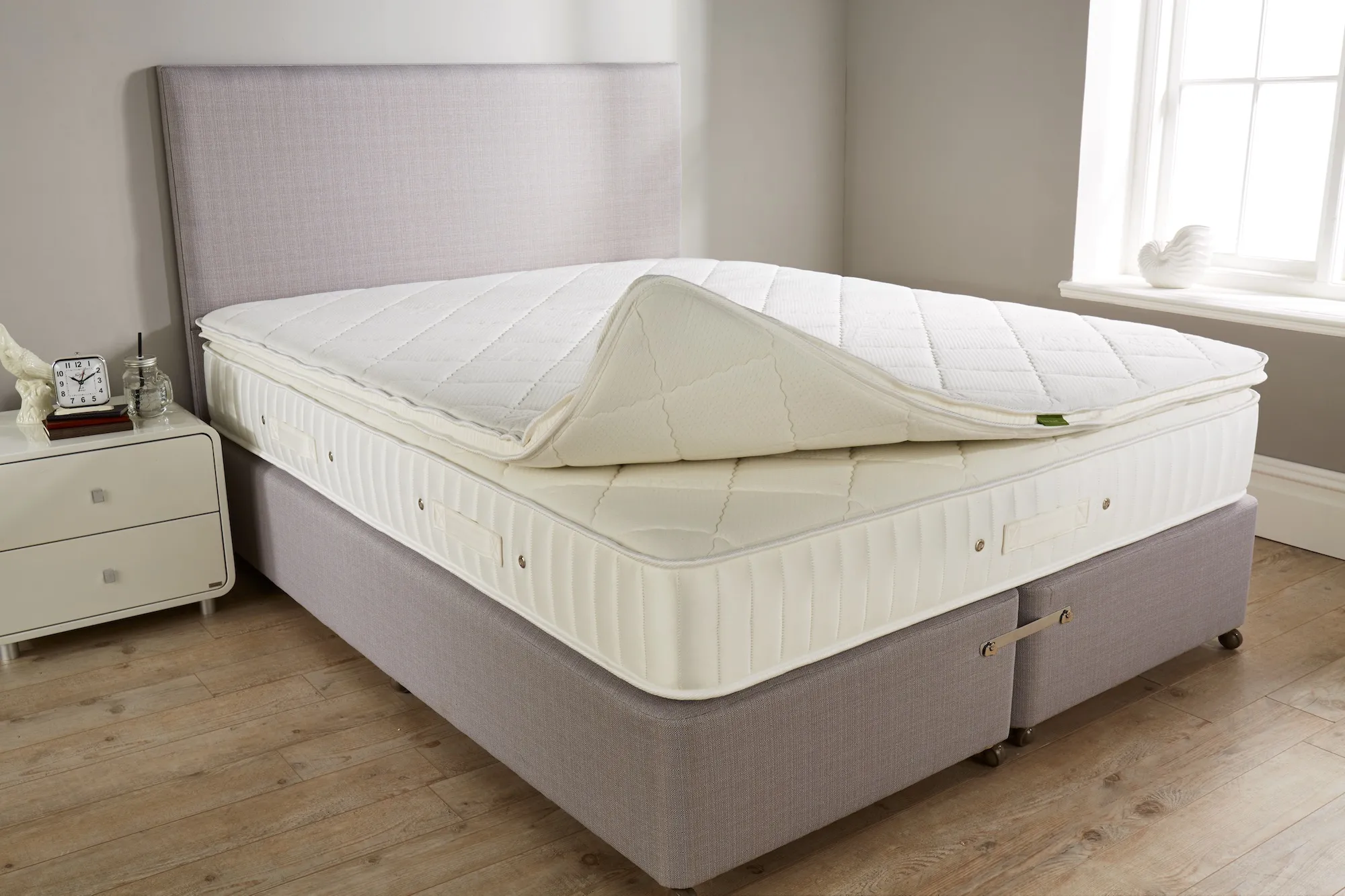
C) Split-Tension Mattresses
If you and your partner have different support needs, a split-tension mattress can cater to both without compromising comfort. Split tensions offer half of the mattress in one spring tension and the other in a firmer or softer spring gauge. This is an ideal solution if you and your partner are at different ends of the body weight spectrum. Having better support in a mattress means less fidgeting and tossing and turning.
If your mattress is too soft or too firm for your body weight, this can lead to nocturnal fidgeting and irritation, which is where a customised split tension one-piece mattress can be the answer to your insomnia prayers!
D) Change to a zip and link mattress
Want to completely level up your sleep experience and remove mattress transference almost completely? Then a zip and link – two mattresses that seamlessly zip together just below the join is the one for you.
This is the absolute best solution for sleepers who move a lot or have different support needs in their mattress. The beauty of zip and link mattresses is that they give the illusion of one mattress so that Instagram’s perfect bedroom you’ve been renovating needs not suffer! Without removing all the covers, you can’t even tell if a kingsize mattress or above is a zip and link. Standard fitted sheets will cover both mattresses and enable you and your partner to have the perfect mattress each.
Best of all, any movement from one to the other stops at the link, so even with the most active nighttime mattress mover, the other partner barely feels a thing!
2. Invest in a Larger Mattress
One common issue with mattresses that causes people to wake up when their partner moves is that a smaller mattress will have much more transference than a larger bed. A mattress that’s too small forces partners into close quarters, making every movement more noticeable, along with springs reacting to each other far quicker and in close proximity.
Upgrading to a king or super king-sized bed provides extra space, reducing the likelihood of being disturbed and allowing you a bit more space for the most luxurious night’s sleep. You may have thought you don’t have the space for a king-size mattress, but our bed size guide shows you that in most cases, you do!
3. Consider Separate Duvets
One simple but effective solution is using separate duvets. This prevents ‘duvet hogging’ and reduces disturbances from one partner shifting the covers during the night. It’s no accident that in Europe, separate duvets and covers have been used for hundreds of years! If you have ever been skiing in Austria or visited Germany, the Netherlands or Sweden, separate duvets are the norm!
No more having the duvet ripped off or rolled over as your partner wiggles and moves. Separate duvets are the secret weapon of all happy sleep partners!
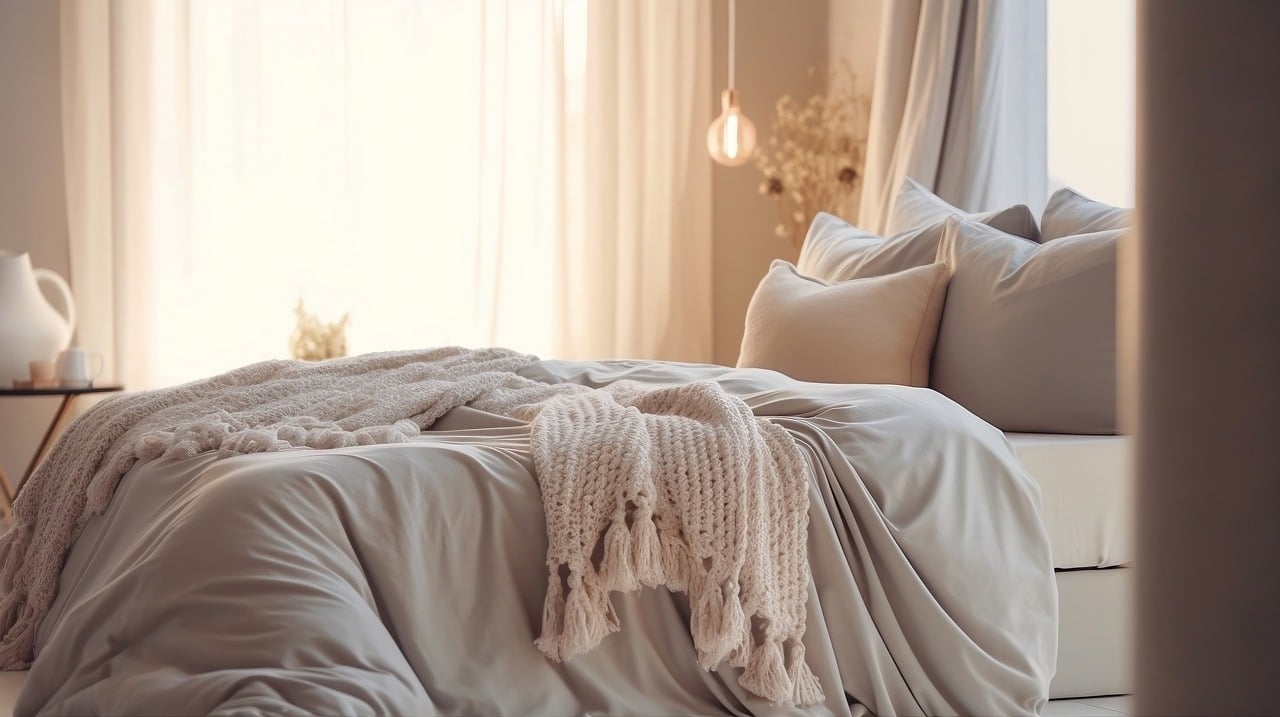
4. Address Snoring Issues
Let’s tackle the next sleep struggle, and that is snoring! Snoring is a common cause of disrupted sleep as the noise and volume of night snoring can prevent you from sleeping and wake you up. Snoring is a total pain and can lead to disastrous nights of patchy sleep and irritability the day after. Identifying and addressing the root cause can lead to significant improvements:

i) Encourage Side Sleeping
Snoring is often worse when lying on the back. If possible trying to get your partner to sleep on their side can be a game changer, even with the subtly hug and roll manoeuvre once your partner is asleep! A supportive pillow can help maintain a side position along with the correct comfort layer in a mattress for side sleepers, usually slightly softer to enable shoulders and hips to sink comfortably into the mattress.
ii) Use Anti-Snoring Aids
Nasal strips, mouth guards, and humidifiers can help minimize snoring and can again help revolutionise your sleep. Plug-in USB-powered humidifiers are game changers and don’t require the usual space for a full-room humidifier. Their beauty is also that they can be taken on holiday in your luggage – win-win!
iii) Check for Sleep Apnea/Aponea
If snoring is severe, consider a professional consultation to rule out sleep apnea, which can be a common cause of very loud snoring followed by worrying silences in your partner’s breathing. This is a serious condition, so we always advise medical assistance, which could lead to the recommendation of using a CPAP machine.
5. Manage Different Sleep Schedules
Contrary to belief, not everyone goes to bed at the same time as their partner. In fact, more people tend to go to sleep at different times, especially with varying hours of working or tiredness thresholds. It goes without saying that going to bed when you’re not tired is not advisable as this leads to frustration and sometimes more movement and fidgeting if you’re lying awake restless.

If you and your partner go to bed or wake up at different times, consider these adjustments to help reduce disturbance during the night.
A) Use a White Noise Machine
We’ve covered extensively why sleep sounds can help you both drift off to sleep and stay asleep, especially in noisy urban apartments or flats. This can mask sounds such as alarms or movement and can help you stay in a deeper REM sleep than if you try and get to sleep with just silence or the ambient noise of neighbours.
B) Wear a Sleep/Eye Mask
A sleep mask or eye mask can block unwanted brightness if your partner’s light disrupts your sleep.
C) Soft Lighting Options
Encourage your partner to use dimmable lamps or red light settings on electronic devices to avoid abrupt disturbances.
6. Check underlying health issues like restless leg syndrome (RLS)
Restless Leg Syndrome (RLS) is a neurological condition that causes an uncontrollable urge to move the legs, often accompanied by tingling, itching, or throbbing sensations. Symptoms typically worsen at night and during periods of rest, making it difficult to fall or stay asleep. The constant need to move disrupts sleep cycles, leading to fatigue and daytime drowsiness. RLS can be triggered by factors like iron deficiency, nerve issues, or genetics, and managing it often involves lifestyle changes, stretching, and medical treatments to improve sleep quality.
What you may think is your partner simply fidgeting could be a symptom of RLS instead.
If you believe you may be suffering from RLS, we advise you to seek professional medical advice as to the diagnosis and treatments available to you.
7. Set Clear Sleep Boundaries
What always surprises us at John Ryan By Design is how many people call or email us about their partner keeping them awake at night, but they have never addressed it directly with them! We’re not sure whether this is us Brits being overly considerate or whether people whose partners keep them awake at night simply don’t know how to address this with their husband, wife or partner! Bite the bullet and sit down for a chat about what’s keeping you awake at night. You may find that your partner has no idea they are keeping you awake at night!
Communicating about sleep disturbances can help both partners find suitable solutions to these problems. Once you have this chat, you can discuss whether you think your mattress needs upgrading, bedtime routines, or even addressing sleep hygiene (the art of having a considerate and scheduled bedtime routine that is set for sleep success).
Other sleep hygiene and boundary issues are:
- Avoiding smartphone, kindles and electronics in bed before sleep
- Sticking to a consistent bedtime
- Reducing caffeine and alcohol before sleep
8. Consider Separate Sleeping Arrangements
If all else fails and disturbances persist, a sleep divorce—where partners sleep in separate beds or rooms—can be a practical solution. Many couples report improved relationships and health when prioritizing quality sleep. It’s not as severe as it sounds either, but sometimes for the short term, taking a ‘holiday’ from sleeping in the same room can help restore decent REM for both partners, and then you can come back to the problem of ‘how to stop your partner from waking you up at night’ with a clear head! There is no shame in this or a sleep divorce; you can always get back together!
Sleep Summary
In a dream world, your sleep should never be compromised. However, we are all humans, and from time to time, sleep disturbances, changes in sleep patterns or fidgety partners will disturb our sleep. So try not to be too hard on each other. By addressing motion transfer, optimizing mattress choice, managing noise, and maintaining good sleep habits, you and your partner can start to improve your sleep routine.
It’s not just dealing with those restless sleepers that can help bring a fabulous night’s sleep; having a comfortable and supportive mattress is another key to enjoying a great night’s sleep.
At John Ryan, we stock all manner of high-quality mattresses. So, if you think your mattress could contribute to your poor sleep quality (even if it’s only in part), then why don’t you browse our excellent range and see if you can find something that suits you better?
If you have any questions about our products, please don’t hesitate to contact us. Our friendly team of experts will be more than happy to listen to your requirements and help you to choose the mattress that will work best for you.

Dreaming of the perfect nights sleep?
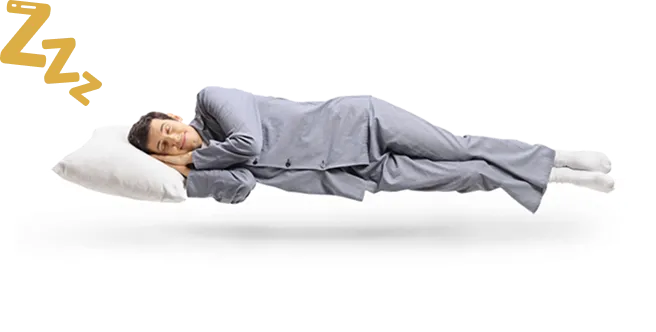
Ask us a question
There are over 6000 questions and answers submitted by you on all questions about mattresses and bed problems. Enter a keyword such as Vi Spring, John Lewis beds, bad back or Memory Foam and see if your question has already been answered.
If you can’t find an answer in knowledge hub, ask a new question. We aim to respond to all questions within one working day.
Newsletter
Enter your email to join our newsletter. We’ll send you occasional news and mattress expertise.

